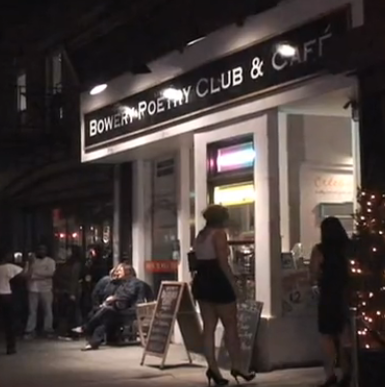Keeping It
There’s no muttering in American Sign Language. It’s measured, thoughtful and eloquent. It’s also a language striving to break the stereotype that just because someone can’t hear, they don’t have anything smart to say. It’s the lifeline of Deaf culture.
Unlike a language such as Spanish or French, ASL shares a tenuous relationship with technological advances — among them, cochlear implants. It also continues to fight for its validity, despite backing from linguists since the 1960s and its recognition as a language this year by the United States Census.
In a New York City school building, the ASL community is striving, once again, to fight for recognition. Although overcrowding in schools is a citywide issue, the problem is exacerbated in a school where children need extra space to face each other and communicate. While all students are visual learners, deaf children are only visual learners.
In a downtown club, ASL culture thrives at a monthly poetry slam. A new documentary celebrates the ASL arts scene.
Through its trials, the deaf community has had to defend itself, and along the way has cultivated a potent culture that holds onto language as its foundation.

With all the advances in technology, cochlear implants are more accessible than they were when they were first introduced in the 1980s. Most health insurance providers cover the procedure. Still, there’s a palpable resistance to these hearing devices among some in the deaf community.

In order to accommodate the students at Manhattan’s only public school for the deaf, P.S. 347 has large rooms, small classes and desk arrangements that promote visual contact. Here’s a look inside the school.

American Sign Language has given rise to a variety of artistic and musical endeavors. The Bowery Poetry Club hosts a Deaf Poetry Jam every month, which brings together deaf hip hop artists from all over the city.

“American Sign Language is a natural human language,” says Juliette Blevins, a linguist at City University New York. But how is it that something so visual can be seen linguistically?

For Aviance Pride, speaking ASL is a privilege. She says that even if she were given the option of using hearing technology, she wouldn’t do it.

Samantha Black can hear perfectly. So can her four-year-old son. So why does she send him to P.S. 47 and 347, a school for the deaf in Gramercy Park?

With all the advances in technology, cochlear implants are more accessible than they were when they were first introduced in the 1980s. Most health insurance providers cover the procedure. Still, there’s a palpable resistance to these hearing devices among some in the deaf community.

Poet Bob Holman oversees a series of American Sign Language poetry slams at the Bowery Poetry Club.









